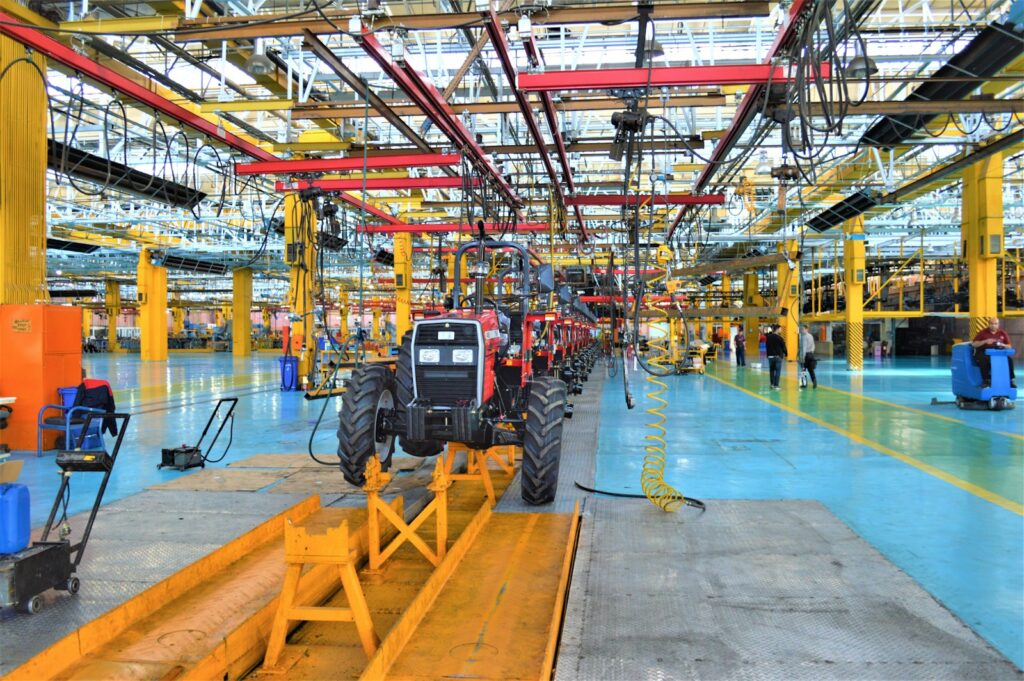Factories that once relied on manual labor and aging equipment are now evolving into intelligent, automated powerhouses. As industries move toward efficiency and precision, integrating advanced control systems becomes a game-changer. Modernizing outdated processes isn’t just about keeping up—it’s about staying ahead in a competitive market.
Replacing Outdated Manual Processes with AI-driven Automation for Faster Production
Manufacturers relying on manual operations face slow production speeds, inconsistent quality, and rising labor costs. Without automation, factories struggle to meet demand and risk falling behind competitors. Control system integration introduces AI-driven automation, allowing machines to handle repetitive tasks with speed and accuracy, freeing up workers for higher-value roles. This shift increases productivity while reducing errors, leading to a more streamlined workflow.
By embedding AI-driven automation into production lines, factories can adjust processes in real time based on incoming data. Machines learn from past performance, optimizing production without human intervention. This level of precision ensures fewer defects, faster order fulfillment, and improved resource utilization. The result is a manufacturing environment that operates with efficiency, delivering high-quality products at an accelerated pace.
Connecting Machines with Real-time Data Sharing to Eliminate Inefficiencies
Factories operating with disconnected equipment often experience bottlenecks, wasted materials, and unplanned downtime. Without real-time communication, inefficiencies go unnoticed until they disrupt production. Control system integration links every machine through intelligent networks, enabling seamless data sharing. When equipment communicates instantly, operators can identify performance gaps and take corrective action before issues escalate.
Real-time data sharing allows manufacturers to track machine performance, detect inefficiencies, and adjust workflows dynamically. Sensors collect information on output, energy consumption, and system health, providing instant feedback. With this data-driven approach, factories eliminate guesswork and base decisions on accurate insights. The result is a leaner operation with fewer slowdowns and higher overall efficiency.
Upgrading Legacy Systems with Predictive Analytics to Prevent Costly Downtime
Aging machinery remains one of the biggest obstacles to efficiency. Equipment failures not only halt production but also lead to expensive repairs and missed deadlines. Instead of waiting for breakdowns, manufacturers can integrate predictive analytics into their control systems to anticipate issues before they occur. This proactive approach reduces downtime, extends equipment life, and cuts maintenance costs.
Predictive analytics uses historical data and machine learning to detect patterns that signal potential failures. Instead of relying on scheduled maintenance, factories can shift to condition-based servicing, where machines receive attention only when necessary. This transition saves money while ensuring that equipment operates at peak efficiency. With fewer unexpected breakdowns, production stays on track, and factories maintain consistent output.
Implementing Smart Sensors That Track Energy Use and Reduce Waste Automatically
Manufacturers looking to cut costs and improve sustainability must address energy waste. Many factories operate inefficiently, consuming more power than necessary due to outdated systems. Smart sensors integrated into control systems monitor energy usage in real time, identifying areas where consumption can be reduced. This automated tracking allows factories to adjust energy use without sacrificing performance.
By optimizing energy consumption, factories lower utility bills and reduce their environmental footprint. Smart sensors detect idle machinery, adjust power levels, and ensure that resources are used efficiently. Over time, these small adjustments lead to significant cost savings. Beyond financial benefits, energy-efficient operations position manufacturers as leaders in sustainable production, meeting both regulatory standards and consumer expectations.
Enhancing Factory-wide Communication with Seamless System Integration
Factories with outdated communication methods often struggle with delays and misalignment across departments. When operators, engineers, and management lack access to real-time information, decision-making becomes slow and ineffective. Seamless system integration ensures that data flows effortlessly between teams, improving coordination and responsiveness.
A unified control system connects every aspect of production, from machine performance to inventory management. Operators receive instant alerts when machines require maintenance, while managers can monitor output remotely. This transparency enables teams to collaborate more effectively, reducing errors and optimizing workflows. With improved communication, factories become more agile, responding quickly to market demands and operational challenges.
Future-proofing Operations with Scalable Control Systems That Grow with Technology
Technology evolves rapidly, and factories that fail to adapt risk obsolescence. Rigid systems limit growth, making it difficult to incorporate new advancements. Scalable control system integration provides the flexibility to upgrade operations as technology progresses. This adaptability ensures that manufacturers remain competitive in an ever-changing industry.
A scalable system allows factories to integrate new machinery, software, and automation tools without overhauling existing infrastructure. As production needs expand, additional capabilities can be added seamlessly. This forward-thinking approach not only protects investments but also ensures continuous improvement. By embracing scalable control systems, factories remain at the forefront of innovation, ready to meet the demands of the future.

